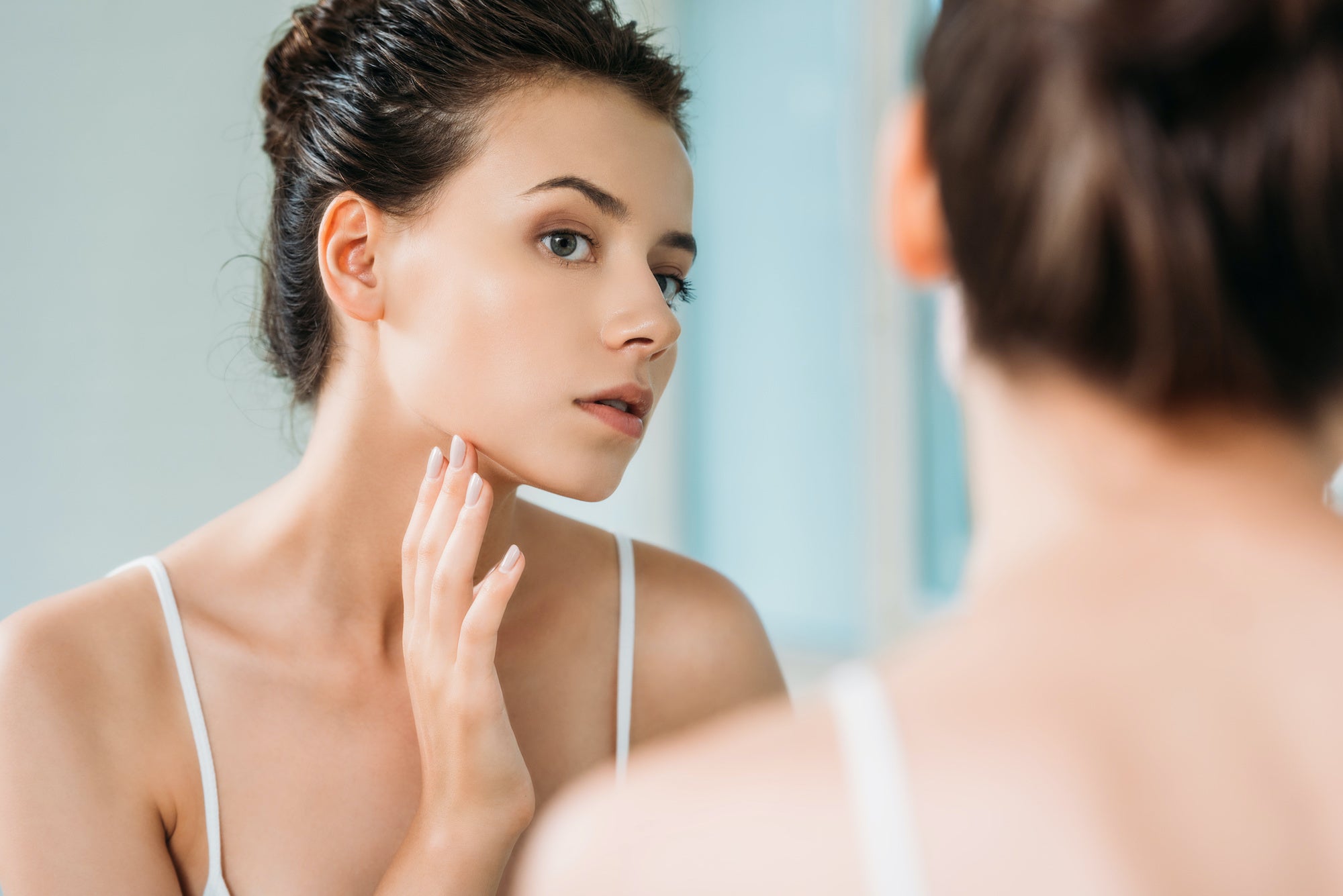
A Deep Dive on Sebum and Acne
We can’t even count the hours we’ve lost googling our skincare woes, heads spinning with the endless barrage of new vocabulary. Scientific terms, industry jargon, the name of that new it-product...it’s a lot to keep up with.
But some of these terms are super important, even if we’re dazedly skimming past them at 2 a.m. instead of sleeping. Like, what about sebum? If like us, you’ve ever fallen into the black hole of the internet while trying to learn more about your skin, you’ve probably run across the word sebum before — but what exactly is it?
What Is Sebum?
Essentially, sebum is the oil that comes out of your pores to protect your skin. If you’re into the technical details (high five for science!), sebum is made up of fatty acids, sugars, waxes, and other natural chemicals.
Sebum is produced by the sebaceous glands, which open into your hair follicles to keep your skin and hair moisturized. The majority of these glands cluster around your face and scalp, with up to 900 sebaceous glands per square centimeter of skin. That’s a whole lot of glands!
What Does Sebum Do For (and To) Your Skin?
We’ve already mentioned that sebum is intended to help. On a good day, it defends your skin against sun damage, delivers antioxidants to the surface of your skin, and forms a protective barrier to keep the healthy, hydrated radiance in your complexion.
If you have problems with the overproduction of sebum, your skin may instead betray you with that telltale grease shine, soaking through your previously flawless makeup and making you dig frantically through your purse for blotting paper. There is such a thing as a dewy finish, but my friends, this is not it.
Adding insult to injury, overproduction of sebum is linked to enlarged pores, so you’re left feeling like your face is so reflective and full of craters that it’ll be the target of NASA’s next moon mission.

The other side of this coin is the underproduction of sebum, which may leave your skin feeling parched and flaky. So you overcompensate with heavy creams, desperate to stop your face from peeling like you’ve just survived a sunburn. Have you ever resorted to hand lotion in a pinch? Not a good plan, as it turns out.)
How Does Sebum Affect Acne?
If you’re in the shiny face club, your overproduction of sebum may also be contributing to the scourge of persistent acne. Excess sebum correlates with the presence and severity of your breakouts, and even where acne appears on your body.
What happens is this: as your skin tries to shed dead cells, the excess oil sticks them together and creates a skin clog called a sebum plug that gets caught inside your pores, stopping them up like a wine cork.
Then pesky acne bacteria (P. acnes) join the party, thriving in the airless conditions and feeding on the trapped oil like a herd of hungry, hungry hippos. The bacteria infect your clogged pores, and thus, a pimple is born.
How Can You Regulate Sebum Production?
Whether you produce too much oil or not enough, the first step toward balancing your sebum is to evaluate your skincare routine.
For dry faces
Throw out those harsh cleansers and any products with ingredients like formaldehyde or synthetic fragrances, which are known to irritate. Instead, try to find skincare options that use nourishing, organic ingredients.
We recommend our Flawless Nourishment Cream, made with natural skin-savers like shea butter, renowned for its high concentrations of fatty acids, and jojoba oil, which mimics sebum and will moisturize your dry patches without irritating the skin.

For oily faces
The trick here is balance. You don’t want to congest your skin further with heavy moisturizers, but you also don’t want to attack with a nuclear-level face wash that strips away all the sebum and leaves your face vulnerable.
Choose a middle path — gentle but effective, like our Radiant Cleansing Nectar. It employs ingredients like antimicrobial manuka oil, which helps eliminate harmful bacteria, and hawthorn berry, which clarifies pores and reduces inflammation to help give you a smoother, clearer complexion.
Sebum may also be affected by hydration and diet. In addition to pampering and nourishing your skin from the outside, try to make sure you’re getting enough moisture and nutrients the old-fashioned way — by drinking water and occasionally opting for the healthier dinner option.
So What’s the Final Word?
Our body may have good intentions when it sets our sebum production way high or way low, but ultimately, we need all good things in moderation — sebum included.
If you are battling a sebum imbalance, whether it means an oily face or a dry one, that light at the end of the tunnel may seem far distant. But with a little focused attention and some easy skincare swaps, your skin can find its happy medium and finally show the world its healthy glow!






